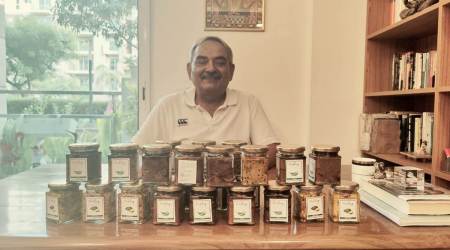Despite the Punjab government setting a target of 4 lakh hectares under cotton to reduce land under paddy, the state has seen a decrease of 23.6 per cent compared to last year, when around 3.25 lakh hectares were under cotton. Experts believe that this can increase the production of paddy in the state.
Till June 9, cotton was sown on only 2.48 lakh hectares of land; Cotton sowing is almost complete. In the Punjab cotton belt, four districts – Bathinda, Fazilka, Mansa and Muktsar – record the highest area under cotton; Not only have they not reached their target this year, but they have not accomplished as much as last year.
The cotton belt of Punjab includes Bathinda, Fazilka, Mansa, Muktsar, Moga, Barnala, Sangrur and Faridkot; Here’s how each fared this year:
fazilki
The district saw the highest area under cotton this year, with a record 93,000 hectares under cotton, 2,000 less than last year.
District Chief Agriculture Officer (CAO) Dr Resham Singh Sandhu said, “We were determined to cross the target of 1.03 lakh hectares, but erratic water supply created hurdles.”
Mansa
Cotton cultivation in the district was recorded at 45,000 hectares, which is 7,000 hectares less than the 52,000 hectares recorded last year. A target of 64 thousand hectares has been set for the district.
Muktsar Sahib
The district did not come close to its target of 50,000 hectares and recorded 32,000 hectares under cotton. Last year the crop was grown in 37,000 hectares in the district.
Bathinda
Cotton has been sown on 67,000 hectares of land in Bathinda; Last year, the crop was grown in 76,000 hectares in the district.
Cotton districts like Barnala, Faridkot, Moga and Sangrur have sown cotton in 1,433 hectares, 2,850 hectares, 149 hectares and 1,244 hectares respectively this year.
irregular water supply
Water scarcity was cited as the major reason for the breach in the Sirhind canal in the entire cotton area; Another reason cited was poor power supply due to which farmers were unable to use tube wells. Due to no electricity for hours, the sowing of cotton was reduced.
Officials of the Agriculture Department said that in the absence of canal water during the cotton sowing season, many have written letters to the government for proper supply of electricity or canal water for running tube wells. Their demands were not heeded and water supply was disrupted in cotton-growing districts from the peak season of cotton sowing – May 8 till the end of the month, officials said.
Officials also said that the pink bollworm pest attack on cotton last year was enough to discourage many farmers from not growing cotton and the 20 per cent reduction in wheat yield was another setback. For these reasons, many farmers wanted to grow crops like paddy instead of cotton as they would give good profits, he said.
Director Punjab Agriculture Dr Gurvinder Singh said that they are still getting the report about the exact area from the field
under cotton.


